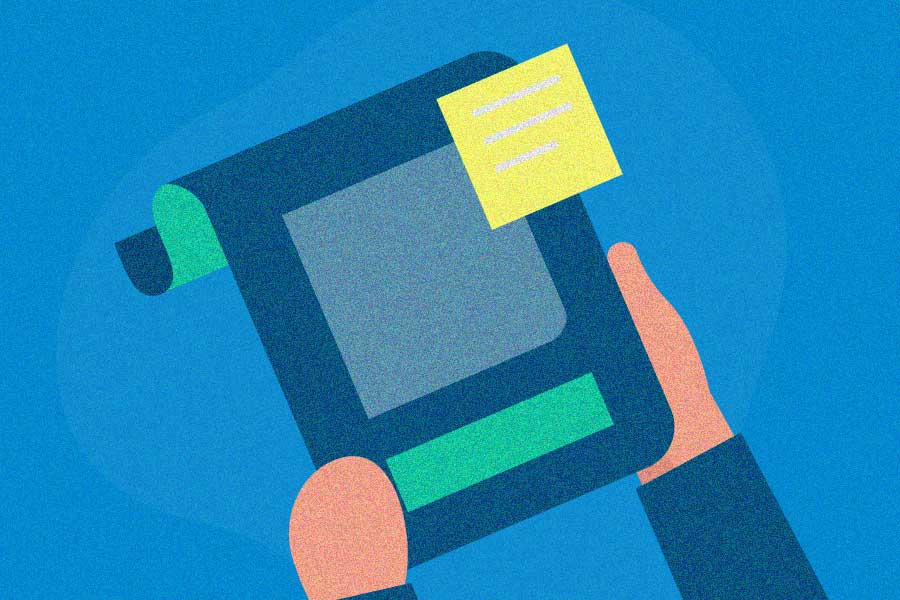Who doesn’t love getting something for nothing, or at least for less than the usual cost? As a business, you can easily apply this insight in your marketing strategy by offering incentives to motivate your customers.
In this article, you’ll learn the basics of marketing incentives, what type of incentives are best for motivating different actions, and examples of successful marketing incentives brands have used.
What are marketing incentives?
Marketing incentives are rewards given by a business to current and potential customers to promote conversions.
These conversions could include initial purchasing, repeat purchasing, website visits, email signups, referrals, and more.
When selecting marketing incentives, it’s important to pick ones based on your specific intent. Do you want to increase brand awareness, gain leads, motivate people to purchase, increase customer retention rate, or get people to refer your business to others? There’s an incentive that can help!
What are the different types of marketing incentives?
Let’s look at several of the most popular marketing incentives, divided by intent.
1. Marketing incentives to increase brand awareness
These incentives draw attention to your brand, particularly from people who haven’t bought from your company yet. People need to know who you are, what you offer, and what you stand for before they intentionally choose to make a purchase from you.
Brand awareness incentives aren’t rewarded in return for anything, since their intent is simply to help get the word out about you. Give these rewards freely and strategically, and you’ll reap your own rewards!
Best incentives for brand awareness
- Free samples: If your audience tries and loves what you have to offer in a smaller quantity, they’re more likely to come back and pay for a full-size product.
- Free products for a very limited time: Think free food offers on special days, like Chick-Fil-A’s Cow Appreciation Day.
- Sweepstakes and contests, especially ones that encourage social media and word-of-mouth sharing
- Branded swag: This includes clothing items, bags, water bottles, pens, or any other items printed with your brand name that your audience would enjoy. (This has the added benefit of turning people into walking billboards for your brand!)
2. Marketing incentives to gain qualified leads
People have found out about your brand, but how do you turn this attention into leads? Certain incentives can help motivate people to give their contact information, so you can nurture them towards making a purchase.
If you’re using a lead generation incentive, you’ll always award it in exchange for an email address or other piece(s) of personal information.
Best incentives for lead generation
- Informational incentives: ebooks, whitepapers, or other documents that share valuable information on a topic related to your brand (These documents will also encourage your leads to trust you more.)
- Coupons and discounts in exchange for an email address
- Free trials of your new product
- Sweepstakes and contests that require a number or email address
3. Marketing incentives to motivate purchases (or repeat purchases)
Purchase incentives give on-the-fence leads a sweetened deal, so they’re more likely to buy from you. They either reduce the cost of a purchase or add value to a purchase through a bonus.
Best incentives for motivating purchases
- Buy one, get one free offers
- Free bonus item with purchase
- Free upgrade with purchase
- Discounts, coupons, or sales
- Sweepstakes where each purchase gains a customer an entry
Create unique discount codes with our coupon code generator >
4. Marketing incentives to improve retention rate
Gaining new customers is great, but retaining your existing customers is even more important. This is because customers’ repeat purchases aren’t offset by customer acquisition costs – and the more purchases a customer makes, the higher their lifetime value becomes.
Retention incentives give customers another reason to stick around. This helps you increase your retention rate and decrease your churn.
The best retention incentives are usually part of an ongoing loyalty program. Be sure to read our article on loyalty program incentives for more details!
Best incentives for encouraging customer retention
- Discounts
- Store credits
- Loyalty points, where individuals can redeem points for select rewards
- Feature upgrades and plan upgrades
- Sweepstakes and contests
Use our gift card code generator to create unique store credit vouchers >
5. Marketing incentives to motivate referrals
Referrals are awesome because people trust their peers far more than they trust messages that come directly from your business. When someone refers their friend to your business, that friend is more likely to become your customer and to remain loyal to your business over time.
Referral incentives help sweeten the deal and give your customers a reason to let their friends know about you. And if you use a double-sided referral incentive (where the friend gets a reward for making their first purchase), they can also help drive customer acquisition!
The best referral incentives are part of a referral program. Check out our article dedicated to referral program incentives for best practices when using referral rewards.
Best incentives for encouraging customer referrals
- Discounts
- Store credits
- Free products
- Branded swag
- Cash payments
What are incentive marketing best practices?
Whichever intent you are creating incentives for, follow these best practices for the best chances of success:
- Keep incentive guidelines simple: An incentive works best when customers know exactly how to earn them. Also, be sure that marketing incentives feel achievable. This helps prevent incentive breakage and promotes trust.
- Remind your customers to use any incentives that expire: Studies show 43% of rewards expire before they are redeemed.
- Look beyond monetary rewards: Non-monetary rewards are just as (if not more) effective.
- Start an incentive marketing campaign: A few popular types are referral programs or loyalty programs.
- Consider gamification: Incorporate challenges, points, leaderboards, and achievements – elements your audience knows and loves from their favorite games – into incentive marketing programs. This will really ramp up the motivation!
- Tie incentives back to your brand whenever possible: This helps give your leads and customers a reason to keep your brand top-of-mind. (Think discounts, store credits, free products, upgrades, and anything else with a direct connection to your products or services.)
- Know what rewards best motivate your audience: It’s not always the most expensive choices that are the most motivating.
Successful marketing incentive examples
These businesses have had particular success with adding incentives to their marketing efforts. Why were they so successful, and what can you learn from them? Let’s break them down.
7-Eleven Free Slurpee Day
This multi-pronged marketing incentive achieves several intent goals at once: brand awareness, retention, and referral. But it still keeps things simple, with a core reward – free Slurpees.
- Avid fans of 7-Eleven know that the chain gives out free Slurpees every July 11th, for 7-11 Day, and make sure all their friends know about the deal as well.
- People who don’t regularly go to 7-Eleven, or who haven’t gone at all, find out about the one-day deal on social media, and get excited about the free drink.
- Loyal customers who are part of the chain’s membership program and visit 7-Eleven on Free Slurpee Day get a digital coupon for a second free Slurpee, redeemable for 30 days after the promo.
7-Eleven hopes that it will hook new customers on their Slurpees with this effective incentive, and give loyal returning customers a reason to come back. And based on how well the promotion’s known, this has been a success among the target demographic. 7-Eleven gave out an estimated 9 million free Slurpees during their 2019 promotion. Playing to urgency pays off!
Tim Hortons’ Roll Up the Rim
Tim Hortons, Canadian coffee and donut staple, uses their annual Roll Up the Rim campaign to incentivize purchases. Whenever customers buy a medium, large, or extra large hot beverage from the chain, they get a chance to “roll up the rim” and possibly win a prize. (In years past, customers physically rolled up the rim on their coffee cup, but this year, they enter a code to “roll up the rim” virtually.)
This contest keeps customers excited – at any moment, they could win coffee for a year, $5000, a prepaid card, or a Tim Hortons gift card, just by buying their favorite drinks. And smaller “free coffee” and “free donut” rewards are also available, so winning feels more attainable.
This contest has become a mainstay in Canada, just like the Tim Hortons chain itself.
T-Mobile Tuesdays
T-Mobile knows happy customers are more likely to stick around, so they have a rewards program that regularly surprises their customers.
Instead of starting a loyalty program, they give all of their customers surprise perks every Tuesday through their app. These perks include free offers and deals from other brands (Puma, Taco Bell, and Redbox, to name just a few), branded swag, and chances to win bigger prizes like gift cards, tech, and vacations. And it’s all just for being a T-Mobile customer!
Chipotle rewards
Chipotle incentivizes repeat customers with this well-designed loyalty program. Customers earn points on every purchase (10 points per dollar), and can redeem 1250 points for entrees of their choice. Plus, they also get free gifts on their birthday.
The brand shakes things up with gamified elements, such as extra point days and surprise challenges, while still keeping their loyalty program easy to understand and rewards achievable.
Bombas referral program
We can’t end our list of top marketing incentives without highlighting a stellar referral program! Sock brand Bombas’ referral program lets customers send their friends a coupon for 25% off of their first Bombas purchase.
And when their friends make that first purchase, customers get rewarded with a $20 gift card of their own, to spend on more Bombas. This generous, two-pronged reward effectively incentivizes customers to share with friends they think would be interested in Bombas.
Marketing incentives are a proven way to motivate your current and potential customers to complete desired actions, or conversions.
Before you choose an incentive, make sure you have a solid goal in mind. What behavior do you want to motivate with the incentives? What marketing campaigns will you use to promote these incentives? A good strategy to offer marketing incentives to your target audience can help drive customer loyalty and increase your bottom line.
If you’re looking for more ideas, check out our guide to referral rewards or learn more about starting a customer referral program!

![5 Key Types of Marketing Incentives [+ Examples] 1 7-Eleven free slurpee day poster (marketing incentive example)](https://referralrock.com/blog/wp-content/uploads/2020/03/pasted-image-0-5-e1600234891544.png)
![5 Key Types of Marketing Incentives [+ Examples] 2 tim hortons roll up the rim](https://referralrock.com/blog/wp-content/uploads/2020/03/pasted-image-0-6-e1600234930801.png)
![5 Key Types of Marketing Incentives [+ Examples] 3 t-mobile-tuesdays](https://referralrock.com/blog/wp-content/uploads/2020/04/t-mobile-tuesdays-744x1024.jpg)
![5 Key Types of Marketing Incentives [+ Examples] 4 chipotle-rewards](https://referralrock.com/blog/wp-content/uploads/2020/04/chipotle-rewards.jpg)
![5 Key Types of Marketing Incentives [+ Examples] 5 bombas](https://referralrock.com/blog/wp-content/uploads/2020/04/bombas-486x1024.jpg)



